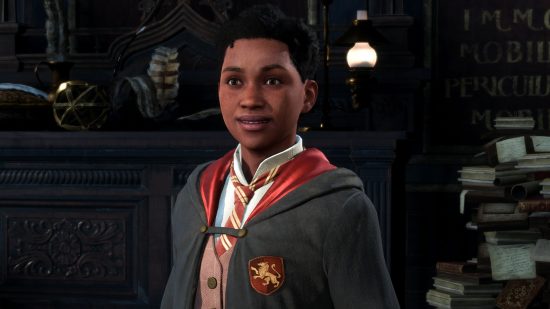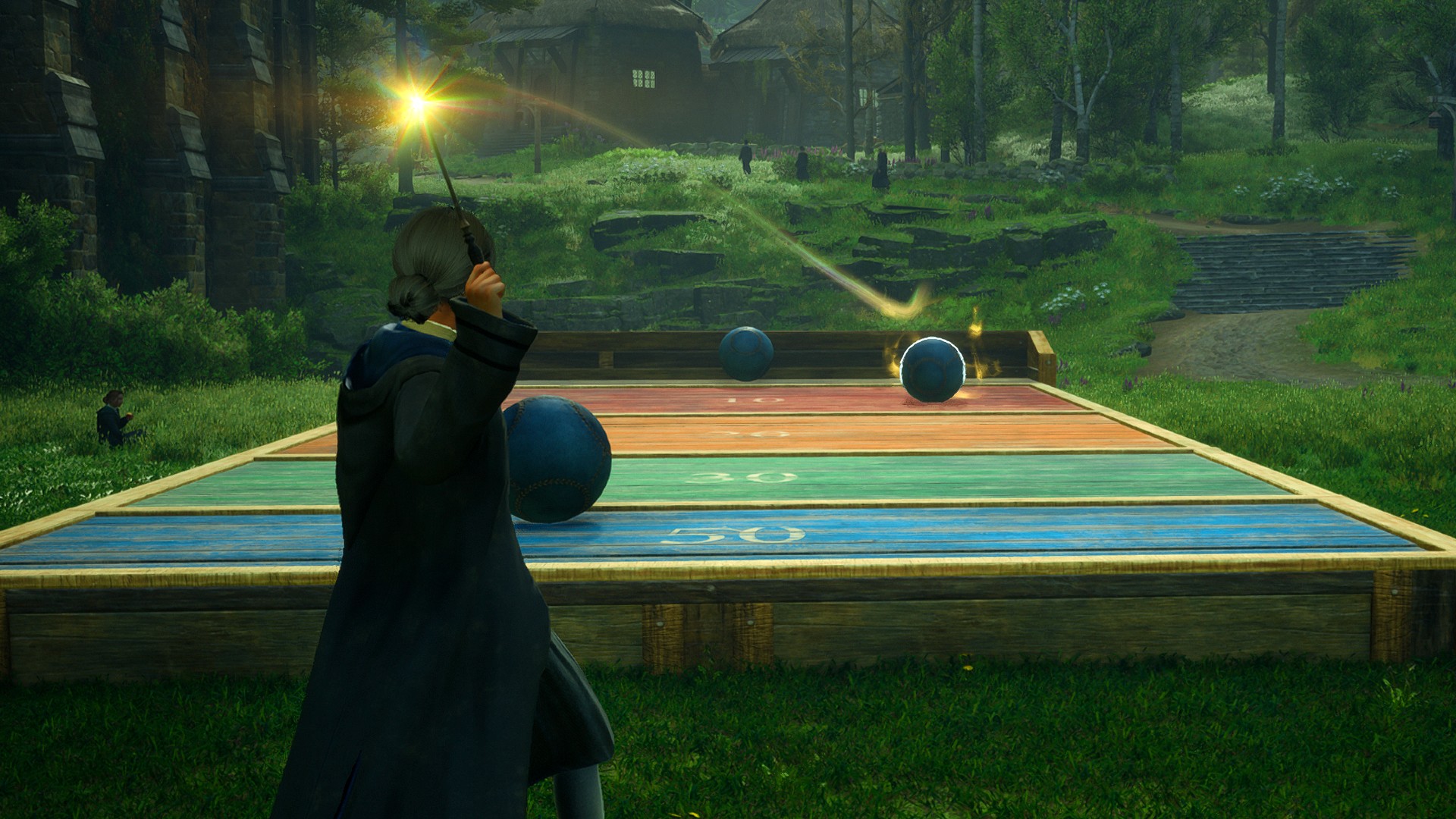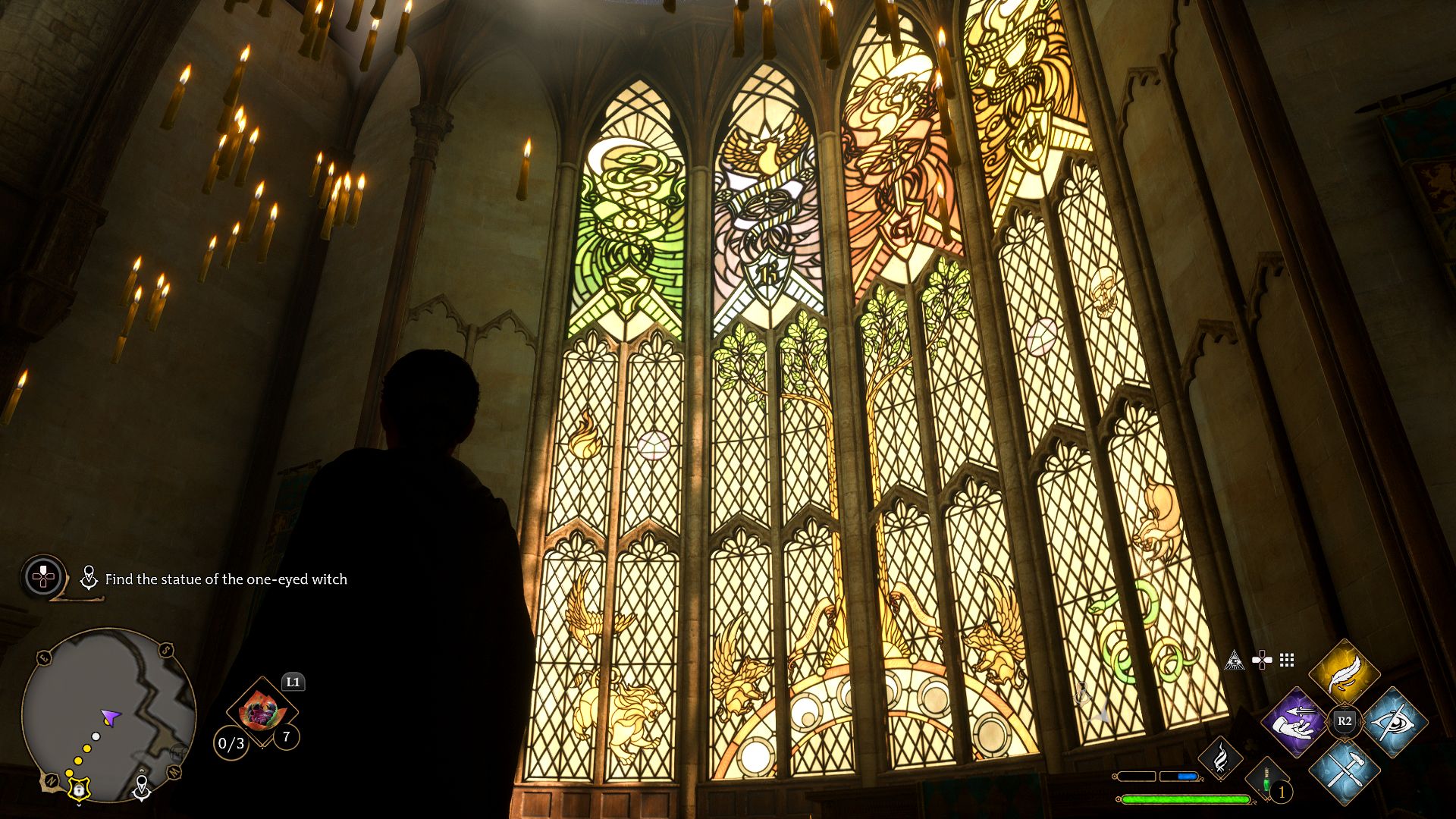Our Verdict
While exploring the confines of the iconic castle, Hogwarts Legacy is a marvel. Outside of it, things are a little less straightforward. While there is some excellent world-building and combat here, Hogwarts Legacy is let down by a questionable narrative and some unnecessary open world baggage.
Hogwarts Legacy has been billed as the ultimate game for fans of the Harry Potter franchise, and it has the potential to live up to that claim. However, it’s far from a perfect videogame. Avalanche Software is bringing the Wizarding World we all know to life with an open world action RPG that promises a castle full of secrets to uncover and sensational spell-slinging with a selection of the series’ most popular incantations. So, at a glance, this game seems like the perfect game for a Potterhead. In many ways, it is. However, the context of this game’s release and the troubling subject matter of its main narrative are impossible to ignore.
So, I went into my playthrough of Hogwarts Legacy with both scepticism and a hope that, at the very least, the goblins fighting for their freedom wouldn’t be vilified quite as much as I expected they would be. Nothing Hogwarts Legacy does can mask the exclusionary comments made by Harry Potter series creator J. K. Rowling; they leave a sour note on every moment of enjoyment this game offers. However, this is still a chance for Hogwarts Legacy to promote a message of equality – even if it isn’t the one we all hoped they would rally behind and promote pre-release – in spite of this universe’s creator.
But, ultimately, it’s a chance Hogwarts Legacy doesn’t take. While not every goblin character in Hogwarts Legacy is vilified, those who stand with Ranrok – the one who’s leading the ‘rebellion’ for goblinkind’s equality – are beyond a doubt. In fact, throughout the narrative, Ranrok and those loyal to him are treated as so evil that they are beyond redemption – a group that has to be wiped from the face of the earth if wizardkind is going to survive.
So, for every option Hogwarts Legacy offers you throughout its narrative, seeing Ranrok as anything other than a villain isn’t one of them – something that feels antithetical to what the story of an immersive open world RPG should offer players. He isn’t the friendliest character in Hogwarts Legacy, sure, but the choices on offer are often superficial and – even though you think you’re trying to de-escalate the conflict between goblinkind and wizardkind – you’re ultimately presented with a series of quests where you’re inadvertently fighting to keep goblinkind as second class citizens in the Wizarding World.
Yes, Ranrok is using violence to achieve his goals, and there is a danger to the world if he succeeds – something you only find out in the closing stages of the story – but there’s so very little effort from any character in Hogwarts Legacy to resolve the situation without murder and bloodshed. The conclusion to the story simply feels out of place in the Wizarding World universe, a contradiction to a lot of the core messages presented throughout the Harry Potter series and the more-recent Fantastic Beasts movies.
While you can avoid learning the Unforgivable Curses and the infamous Avada Kedavra spell, their liberal use by other characters throughout the game – both good and bad – makes them feel far less sinister, and unforgivable, than they should. Finding a peaceful solution is not in Hogwarts Legacy’s nature and you’re often encouraged to fight and kill your enemies regardless of whether you know that curse or not.
That being said, in moments where you veer off of the main story and explore, the Hogwarts Legacy characters you encounter, side quests, and additional activities hit the notes I wanted Hogwarts Legacy to hit as a Harry Potter fan. Other than the fact you’re forced to fight to the death in between classes, Avalanche Software has done an excellent job of pulling you into the fantasy of being a student at Hogwarts School of Witchcraft and Wizardry with an impressive level of detail going into world-building. The multitude of paintings adorning the stone walls surrounding the ever-moving Grand Staircase of Hogwarts are almost always animated and you’ll find yourself passing more than one humming suit of armour on your way into the Great Hall. You can even pass more than one student being berated by a red-enveloped Howler – there must be a lot of lost school textbooks on Platform 9 and ¾. Whether you’re a Potterhead or not, exploring Hogwarts Castle is a delight.
Not only this, but almost everything you do in Hogwarts Legacy has a level of interaction built into it that takes advantage of the game’s core mechanics. From playing a game of Summoner’s Court with one of your competitive classmates to brewing your next batch of Wiggenweld potion ahead of a trip into the Forbidden Forest, you’re always presented with a chance to take advantage of all the tools at your disposal – in this case, the spells you’ve been learning – outside of combat.
However, this combat is where this game shines – and where the spells come in handy the most, as you might imagine. Right from the start, the combat in Hogwarts Legacy is fun and engaging; it’s challenging enough, throwing a variety of enemies at you while implementing a colour-matching shield system that forces you into using a variety of attacks, without becoming too complicated. This only continues as you expand your selection of available spells and unlock new ways to support yourself in combat; the stunning scream of an un-pocketed Mandrake is a personal favourite.
What I found particularly enjoyable is that there is always a way to make light work of your opponent, even those with the largest health pools several levels ahead of you. Whether you’re using Flipendo on a troll’s club to bash him with it, or using Levioso to hold a dugbog by its tongue before slicing it off with Diffindo, you’re never helpless in a fight.
Avalanche Software has cleverly preserved the fantasy power of magic in the Wizarding World while retaining a levelling system. However, this is something Hogwarts Legacy does also suffer from. This game is laden with typical open world RPG mechanics and systems which, I feel, hold it back from reaching its potential – even if they’re well integrated into the lore of the Wizarding World.
Some are definitely necessary and enhance the experience. There’s a fast travel system, which is quite useful when you consider the impressive size of the Hogwarts Legacy map, presented to you as a series of Floo powder flames. You can also try out some time trials, which are presented as a hopeful broomstick maker trying to perfect his craft, and several upgrades to unlock. Avalanche Software has even gone as far as to introduce three spells that facilitate your customization of the Room of Requirement – so, even when you’re decorating a new Herbology planter or setting up some chairs, you’re presented with something that feels authentic to the Wizarding World.
But then you come to things like the game’s gear system and the mirage supported by your use of a wand soon fades. I know you can’t expect to play an open world game without one, and I knew Hogwarts Legacy had one going into it, but you can’t help but feel like you need to pay close attention to it if you want to succeed.
However, it’s something that feels like a wholly unnecessary addition to the game when you consider the fact that the rest of the experience is trying so desperately to pull you into the fantasy of being a student at Hogwarts. Continually needing to swap out a pair of gloves with another to ensure your spells are going to be as potent as possible is a bit of an immersion-breaker. Not only this, but the gear you loot is randomised in a world where contextual references and lore is everywhere. If I’m opening a chest in Madam Kogawa’s office, the Flying professor and a keen Quidditch fan, I want to find Quidditch-themed gear – not a Bowler Hat that’s a lower level than the Bowler Hat I am being forced into wearing in the hopes that it improves my resistance to fire damage.
This, along with a main narrative that overshadows every magical moment with prejudice, is where Hogwarts Legacy is lacking. Inside Hogwarts Castle, when you’re sneaking through the restricted section of the library or helping Zenobia find her lost Gobstones, is the enchanting experience Harry Potter fans have waited a long time for in a videogame. Outside Hogwarts Castle, when you find yourself continually fighting against a cause you shouldn’t (without choice) while clearing yet-another Dark Wizard Camp in the hopes of finding a hat that offers you two or three more points of defence than the one you’re wearing, is a little lacklustre.

Hogwarts Legacy is a victim of context – both, when you consider J.K. Rowling’s deplorable comments, and the unavoidable fatigue that comes with playing yet-another open world game with hundreds of collectibles and a never-ending gear system where having the right level of equipment is presented as important, but ultimately meaningless.
Having finished the main narrative, and quite a few of the side quests, I can’t help but wonder why so many of the narrative decisions you’re presented with as a player were made. One half of Hogwarts Legacy feels perfectly in place and in keeping with the franchise already established around it, and the other feels woefully wedged in and almost an insult to the source material.
Hogwarts Legacy isn’t a student simulator for fans hoping to throw themselves into the charming Wizarding World where chocolate frogs jump from their wrappers and tea leaves tell the future, but perhaps it should have been.
Hogwarts Legacy has drawn considerable criticism during its development, largely due to the fact that the creator of the Harry Potter series, J.K. Rowling, has made a number of transphobic remarks on social media in recent years.
While Avalanche has confirmed that J.K. Rowling is not “directly involved” in the development of Hogwarts Legacy, it is working with “her team” and Portkey Games, a Warner Bros. label dedicated to launching new experiences inspired by J.K. Rowling’s original stories. It is currently unclear whether she will earn any royalties from the game’s sale, but it is likely given it is based on her original body of work.
If you would like to learn more about transgender rights or lend your support, we’d encourage you to check out the National Center for Transgender Equality in the US and Mermaids in the UK.



